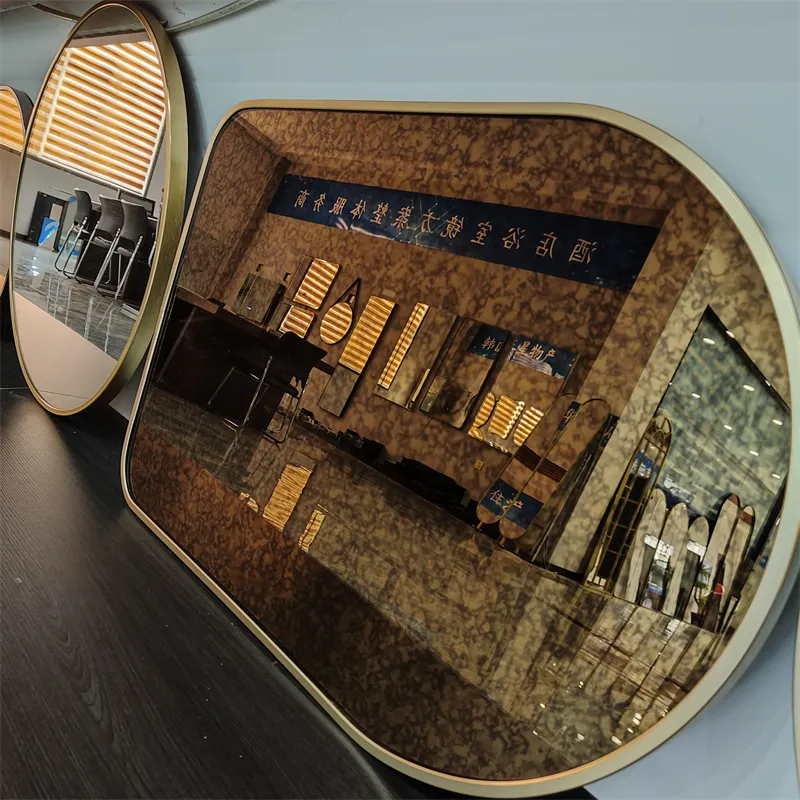10 月 . 22, 2024 08:16 Back to list
Design Ideas for Stained Glass Window Panels in Modern Interiors
Stained Glass Window Panels A Timeless Art Form
Stained glass windows have captivated the hearts and minds of people for centuries, serving as both functional architectural elements and breathtaking works of art. These exquisite panels of colored glass have adorned cathedrals, churches, and significant public buildings all over the world, telling stories, evoking emotions, and transforming spaces with their vibrant hues and intricate designs.
The history of stained glass can be traced back to ancient times, with evidence of its use found in the Roman and Byzantine empires. However, it blossomed during the Middle Ages, particularly in Europe, where it became synonymous with Gothic cathedrals. Craftsmen employed extraordinary skills to create stunning visual narratives that often depicted biblical stories, saints, and significant religious figures. The famous Canterbury Cathedral in England and the stunning Sainte-Chapelle in Paris are prime examples of how stained glass can enhance the spiritual experience, allowing sunlight to filter through while creating an ethereal atmosphere within sacred spaces.
Creating stained glass involves a meticulous process. The first step is designing the panel, often inspired by stories, nature, or specific themes. Artists sketch their ideas, taking into consideration how colors will interact and how the light will play with the glass. Once a design is chosen, glass pieces are cut and shaped, sometimes using traditional methods such as blowing and molding. The glass is then painted with special ceramic paints that, once fired, become permanent and vibrant. After painting, pieces are assembled and held together with lead came, creating a frame that adds strength and structure. The result is a breathtaking panel of glass that not only serves as a window but also as a storytelling medium.
Stained glass has evolved over the years, adapting to different artistic movements and styles. The Renaissance brought a new level of sophistication, with artists experimenting with perspective and more realistic human figures. The Art Nouveau and Arts and Crafts movements in the late 19th century offered a fresh take, focusing on organic designs and geometric patterns. Modern stained glass artists often incorporate contemporary themes and abstract designs, pushing the boundaries of this traditional craft to reflect current societal issues and artistic trends.
stained glass window panels

Today, stained glass window panels continue to find their place in a variety of settings beyond churches
. They grace urban homes, office buildings, schools, and art galleries, providing a unique way to incorporate beauty and history into everyday life. Homeowners often commission custom pieces that reflect their personal stories or beliefs, making stained glass an enduring and cherished art form.The use of stained glass extends beyond aesthetic appeal; it also serves functional purposes. Its ability to vary light intensity, protect from ultraviolet rays, and offer privacy while still allowing light to permeate a space makes it a valuable architectural component. Furthermore, the interplay of light and color can create serene and inspiring environments, enriching the experiences of those who inhabit these spaces.
As society becomes more technologically inclined, the significance of traditional crafts like stained glass emerges as even more important. These window panels link us to our history, culture, and spirituality, reminding us of the craftsmanship and dedication involved in their creation. Community workshops and classes on stained glass techniques have burgeoned, signaling a renaissance of interest in this ancient art form. Whether through making stained glass art or appreciating those who do, people connect with their heritage and embolden creativity.
In conclusion, stained glass window panels are not merely decorative elements; they are vessels of history, artistry, and culture. Their ability to enhance sacred and secular spaces alike, to tell stories through color and light, and to adapt to contemporary aesthetics ensures their place in the modern world. As we look towards the future, stained glass remains a testament to human creativity and expression, inviting us to pause, reflect, and admire the beauty that can be created when light meets art.
-
Wired Glass: A Strong and Secure Glass Solution for Various Applications
NewsNov.04,2024
-
Tinted Glass: A Stylish and Functional Choice for Modern Homes
NewsNov.04,2024
-
The Elegance and Versatility of Silver Mirrors
NewsNov.04,2024
-
The Advantages of Copper Free Mirrors
NewsNov.04,2024
-
Tempered Glass: A Reliable Choice for Modern Applications
NewsNov.04,2024
-
Pattern Glass: Stylish and Functional Glass for Modern Design
NewsNov.04,2024
Related PRODUCTS














